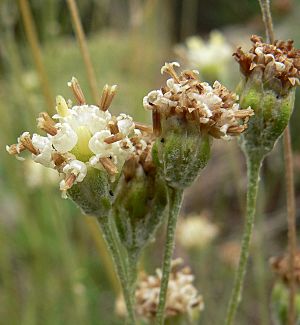Fineleaf hymenopappus facts for kids
Quick facts for kids Fineleaf hymenopappus |
|
|---|---|
 |
|
| var. eriopodus | |
| Conservation status | |
| Scientific classification | |
| Kingdom: | |
| (unranked): | |
| (unranked): | |
| (unranked): | |
| Order: | |
| Family: | |
| Genus: | |
| Species: |
H. filifolius
|
| Binomial name | |
| Hymenopappus filifolius |
|
| Synonyms | |
|
Synonymy
Hymenopappus arenosus A.Heller
Hymenopappus cinereus Rydb. Hymenopappus eriopoda A. Nelson Hymenopappus eriopodus A.Nelson Hymenopappus gloriosus A.Heller Hymenopappus lugens Greene Hymenopappus luteus Nutt. Hymenopappus nanus Rydb. Hymenopappus nudipes Maguire Hymenopappus parvulus Greene Hymenopappus pauciflorus I.M.Johnst. Hymenopappus polycephalus Osterh. Hymenopappus tomentosus Rydb. |
|
Hymenopappus filifolius is a type of flowering plant. It belongs to the daisy family. People often call it fineleaf hymenopappus or Columbia cutleaf. This plant grows naturally in western and central North America. You can find it from Canada (Alberta and Saskatchewan) all the way south to Mexico (Chihuahua and Baja California).
Contents
About the Plant
This plant is very adaptable. It often grows in dry, desert-like areas. It is a perennial herb, meaning it lives for more than two years. It has a deep main root called a taproot.
What it Looks Like
Hymenopappus filifolius can look different depending on where it grows. It might be a small clump close to the ground. Or it can grow as tall as one meter (about 40 inches). Its stems stand up straight.
Most of its leaves are at the bottom of the plant. They form a fuzzy, gray-green patch. These leaves can be up to 20 centimeters (8 inches) long. They are divided into thin, blunt parts. The leaves can be a bit hairy or very woolly. They are dark green under their white, woolly coat.
The stem ends in a group of branches. Each branch has knob-shaped flower heads. These heads are full of tiny, golden yellow or white disc florets. These are the small flowers that make up the center of a daisy-like bloom. This plant does not have the flat "petals" you see on a daisy, which are called ray florets.
Different Types of Hymenopappus filifolius
There are many different varieties of Hymenopappus filifolius. A variety is a group of plants within a species that has slightly different traits. Here are some of them and where they grow:
- Hymenopappus filifolius var. eriopodus – This variety has white flowers. It grows in California, Nevada, and Utah.
- Hymenopappus filifolius var. filifolius – Found in Idaho, Oregon, and Washington.
- Hymenopappus filifolius var. idahoensis – Grows in Idaho.
- Hymenopappus filifolius var. lugens – Found in Arizona, California, Nevada, Utah, New Mexico, and Baja California.
- Hymenopappus filifolius var. luteus – Grows in Utah, Wyoming, and Colorado.
- Hymenopappus filifolius var. megacephalus – Found in California, Nevada, Utah, Arizona, and Colorado.
- Hymenopappus filifolius var. nanus – Grows in Arizona, California, Nevada, and Utah.
- Hymenopappus filifolius var. nudipes – Found in Utah and Wyoming.
- Hymenopappus filifolius var. parvulus – Grows in Colorado.
- Hymenopappus filifolius var. pauciflorus – Found in Utah, Arizona, and Colorado.
- Hymenopappus filifolius var. polycephalus – Grows in Alberta, Saskatchewan, Colorado, Kansas, Montana, Nebraska, North Dakota, South Dakota, and Wyoming.
- Hymenopappus filifolius var. tomentosus – Found in Utah.
Traditional Uses
The Zuni people, a Native American tribe, have traditionally used this plant. They would prepare the chewed root with lard. This mixture was then applied to swellings. They also made a warm drink from the root. This drink was used as an emetic, which helps to cause vomiting. The root was also used as a type of chewing gum.


